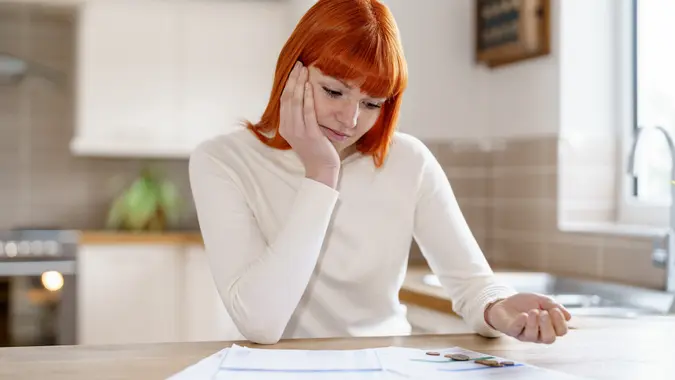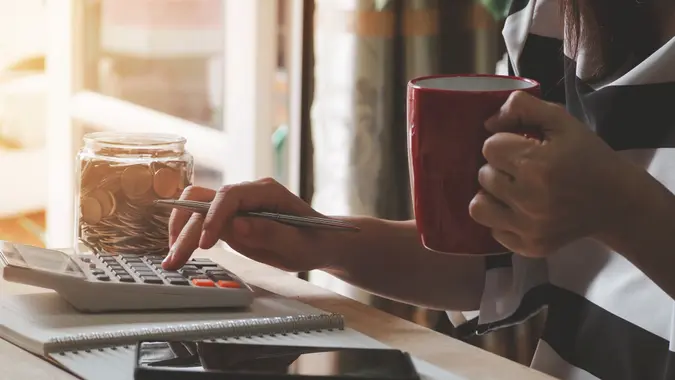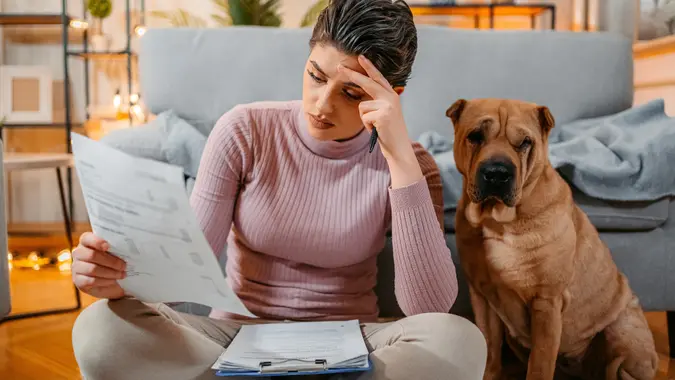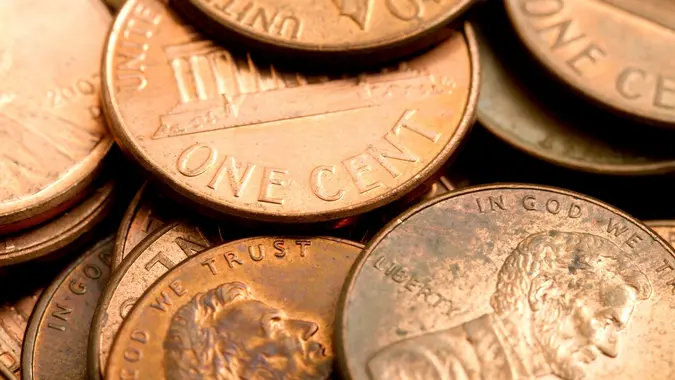Robert Kiyosaki’s Best Basic Money Advice To Get You Started

Commitment to Our Readers
GOBankingRates' editorial team is committed to bringing you unbiased reviews and information. We use data-driven methodologies to evaluate financial products and services - our reviews and ratings are not influenced by advertisers. You can read more about our editorial guidelines and our products and services review methodology.

20 Years
Helping You Live Richer

Reviewed
by Experts

Trusted by
Millions of Readers
Entrepreneur, educator and investor, Robert Kiyosaki, received his claim to fame through the success of his No. 1 personal finance book “Rich Dad Poor Dad.” Decades later, Kiyosaki is still explaining how money works — and how to get rich — with the goal of helping people become more financially literate.
To get you started, here’s Kiyosaki’s best basic money advice from his book, “The Beginner’s Guide to Personal Finance.” Also, for more great advice, check out our list of the Top 100 Money Experts.
Pay Yourself First
Kiyosaki wrote that he and his wife, Kim, achieved financial success by using a method called “Pay Yourself First.” He wrote, “Essentially, this is a way of prioritizing your financial saving and investing, making it an expense item on your budget … the most important one.”
Kiyosaki explained that for every $1 of income, he and his wife placed 30% into three separate accounts:
- 10% to Savings — used as a cushion for emergencies
- 10% to Investing — allocated for investment opportunities that arise
- 10% to Charity — Kiyosaki believes charity is a powerful tool that yields many benefits.
Kiyosaki wrote that the reason he and Kim paid themselves first was because they needed the money to purchase assets that provided more and more passive income each month. “We then used that income to purchase our liabilities — not our earned income from salaries,” he wrote. “That is the simple way we budgeted to get rich, and it is a very different approach than other financial advice.”
Know the Difference Between Assets and Liabilities
Kiyosaki believes that if it puts money in your pocket, it’s an asset, and if it takes money out of your pocket, it’s a liability. Unlike many other personal finance experts, Kiyosaki views your home as a liability because it takes money from your pocket. It only becomes an asset, he wrote, when you sell it for a profit.
He also believes in finding ways to turn liabilities into assets when possible. Kiyosaki said that when his wife wanted a 60-foot sailboat, they didn’t have the money to purchase it. So, instead of saving up for it and buying it later on, the couple found a more creative and financially beneficial option to afford it.
“So, Kim did some research, found out how to contract the boat with a charter company, and the income from the charters covered our liability in the boat,” explained Kiyosaki. “We got to own a luxury liability, and it also became an asset for us. That is winning at money. Saving and then buying is not.”
Know the Difference Between Good Debt and Bad Debt
Kiyosaki believes there are two kinds of debt: good and bad. He explained that bad debt is used to buy liabilities that don’t provide any cash flow, such as cars, vacations and homes for personal use. Good debt is used to buy assets that add more money to your bank account each month than the cost of the debt. Examples are investment properties and capital investments in your business.
Kiyosaki urges you to pay bad debt off as soon as possible and embrace good debt.
“The reason for this is simple,” wrote Kiyosaki. “You can accelerate your return on investment (ROI) by using debt, aka Other People’s Money (OPM), to purchase assets. This is because you have less of your own money in an investment, but you still enjoy the cash flow from that asset.”
Understand How To Improve Your Credit Score
Kiyosaki wrote that the path to getting rich using “good” debt is to have good credit. Additionally, he wrote that a credit score of 700 is considered good, and above 800 is excellent.
“Simply put,” explained Kiyosaki, “the higher your credit score, the easier it is to get debt, better terms on that debt, and insurance to protect your investments.”
For example, lenders often use FICO scores to determine whether someone is a good lending risk. FICO scores are made up of the following categories:
- Payment history: 35%
- Amounts owed: 30%
- Length of credit history: 15%
- New credit accounts: 10%
- Types of credit used: 10%
And what’s the easiest way to improve your credit score, according to Kiyosaki?
“The easiest way to improve your credit score is to reduce your bad debt and to pay your creditors on time (or negotiate with them for extensions as you pay yourself first),” he wrote.
More From GOBankingRates
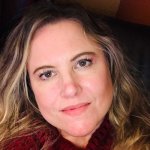 Written by
Written by  Edited by
Edited by 




